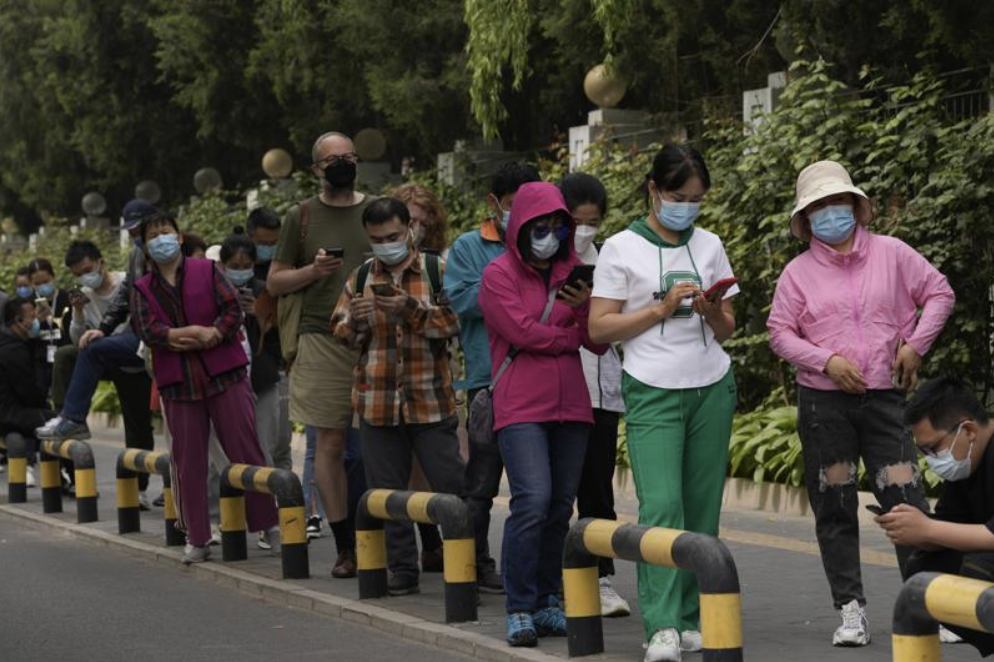Fenced In: Shanghai Lockdown Intensifies as COVID-19 Fears Grip the Rest of China
Since the Shanghai lockdowns were announced a month ago, Chinese officials have scrambled to contain the resurgence of COVID-19. After instituting mass testing and quarantine, many were hopeful that a trending decline in cases that started a week ago would spell the beginning of the end for Shanghai’s indefinite lockdown. Unfortunately, cases on Apr. 23 marked a resurgence that dashed any hopes of an end to the lockdowns.
Indeed, officials have instituted more stringent restrictions on Shanghai residents as the lockdown has dragged on. In the last week, green fences have been constructed, blocking in several residential units, closing off streets, sometimes even sealing off whole housing blocks.
Green fences seal entrances to shops and housing units on a Shanghai street. Photo: REUTERS
These fences have not been officially justified by Shanghai authorities, though a notice dated Apr. 23 from one local authority said they were imposing "hard quarantine" in some areas. The two-meter-high fencing, appearing all throughout Shanghai, have reinforced the draconian nature of the lockdowns in the minds of many residents. One resident of a fenced-in compound explained that “no one can get out. I feel helpless. You don't know when the lockdown is going to end."
These fences are only the latest developments in the long line of restrictions on the lives of Shanghai residents. Amidst food insecurity, controversial child separation policies, and negligent quarantine conditions, residents of Shanghai have taken to social media to voice their concerns and dissent for the handling of the outbreak.
Indeed, a video documentary titled “Voices of April,” in which citizens openly criticize and question lockdown policies, has widely circulated the Chinese internet. Despite efforts by censors to take down the film, users on sites like Weibo rallied to combat the censorship by reposting the film in various configurations. The film was posted upside down, embedded in between cartoon clips, and circulated through QR codes and cloud services.
Unfortunately, Shanghai is not the only urban center to face lockdown. The cities of Anyang in central China and Dandong by North Korea are the latest to face lockdowns, with officials announcing these closures as the Omicron variant continues to be infectious among Chinese populations. As the lockdowns continue to spread, it is unclear whether China will be able to maintain this level of quarantine, as the zero-COVID policy has already begun to crack under social pressure.
Similarly, in Beijing, fears of a similar lockdown have created a quiet concern. After 29 new cases were announced in a 24 hour time period in Beijing, citizens began buying up food and other basic goods in fear of a Shanghai style lockdown, where residents have repeatedly struggled to obtain basic necessities as officials prevent citizens from leaving their homes to buy supplies.
Residents wearing masks line up for mass COVID testing in Chaoyang District on Monday, April 25, 2022, in Beijing. Photo: Ng Han Guan via. AP Photo
Beijing officials have begun mass testing the city of 21 million people, and areas where cases have been identified have been restricted to essential travel. These semi-quarantine zones have shut down businesses and workers are encouraged to work from home.
For the foreseeable future, this resurgence of COVID-19 shows no signs of slowing, and Chinese officials face a tough battle in maintaining the zero-COVID policy they champion. If the same organizational ineptitude that plagued Shanghai’s lockdown spreads to other cities and their efforts, public pressure and disapproval for these restrictions may force the CCP’s hand in changing COVID-19 policy.


